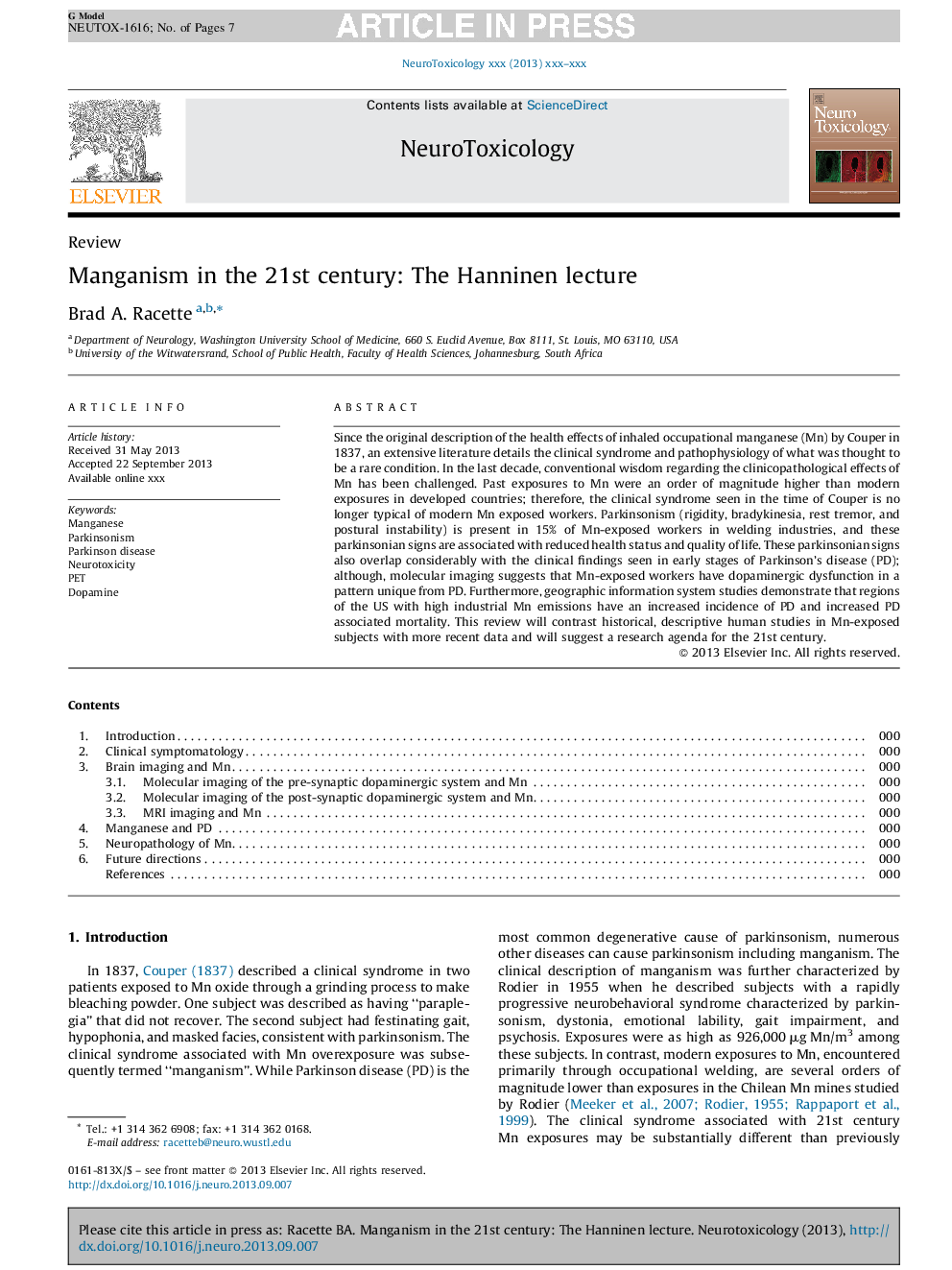| Article ID | Journal | Published Year | Pages | File Type |
|---|---|---|---|---|
| 5854902 | NeuroToxicology | 2014 | 7 Pages |
Abstract
Since the original description of the health effects of inhaled occupational manganese (Mn) by Couper in 1837, an extensive literature details the clinical syndrome and pathophysiology of what was thought to be a rare condition. In the last decade, conventional wisdom regarding the clinicopathological effects of Mn has been challenged. Past exposures to Mn were an order of magnitude higher than modern exposures in developed countries; therefore, the clinical syndrome seen in the time of Couper is no longer typical of modern Mn exposed workers. Parkinsonism (rigidity, bradykinesia, rest tremor, and postural instability) is present in 15% of Mn-exposed workers in welding industries, and these parkinsonian signs are associated with reduced health status and quality of life. These parkinsonian signs also overlap considerably with the clinical findings seen in early stages of Parkinson's disease (PD); although, molecular imaging suggests that Mn-exposed workers have dopaminergic dysfunction in a pattern unique from PD. Furthermore, geographic information system studies demonstrate that regions of the US with high industrial Mn emissions have an increased incidence of PD and increased PD associated mortality. This review will contrast historical, descriptive human studies in Mn-exposed subjects with more recent data and will suggest a research agenda for the 21st century.
Related Topics
Life Sciences
Environmental Science
Health, Toxicology and Mutagenesis
Authors
Brad A. Racette,
